Current Research Topics
Phase Behavior of Diblock Blends
Block Copolymer Grafted Nanoparticles
Protracted Colored Noise Dynamics for Polymers (PCND)
Crosslinked Epoxy Network Optimization and Analysis for Addative Manufacturing
Nanoscale Hydrogel Swelling
Waste Platic Enhanced Roads
Phase Behavior of Diblock Blends
Control of ordered block polymer structures is most commonly done via precise synthetic techniques, but blending of polymers is a significantly easier way to control structures if the process can be understood. We will blend AB and C-D block copolymers to create interesting and useful morphologies such as self-coating films (where one block presents itself at a free interface), or combinations of known morphologies.
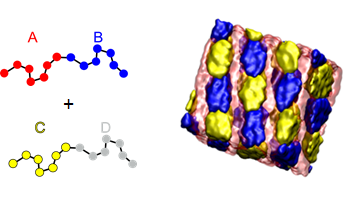
Block Copolymer Grafted Nanoparticles
Nanoparticles may be added to polymers to improve mechanical, thermal, or optical properties of the resulting nanocomposite, but precise control over nanoparticle arrangement and interfacial state is necessary for these systems to reach their ultimate potential. We will use the natural propensity of block copolymers to microphase separate to control the arrangement and interfacial properties in these dispersions. We will perform these studies via molecular dynamics because such simulations are adept at exploring such properties and systems.
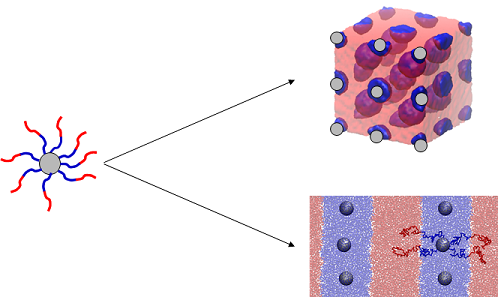
Protracted Colored Noise Dynamics for Polymers (PCND)
Molecular dynamics simulations of polymeric systems are significantly limited in terms of the time and length scales that can be studied. We will develop a new technique, Protracted Colored Noise Dynamics for Polymer Systems (PCND), which applies a time correlated random force in order to increase phase space sampling and reduce time to equilibration. Our preliminary results indicate that a 4 order of magnitude decrease in defect annihilation time is achievable. We will adapt this technique to a variety of polymer architectures and models, allowing access to timescales far beyond current capabilities.
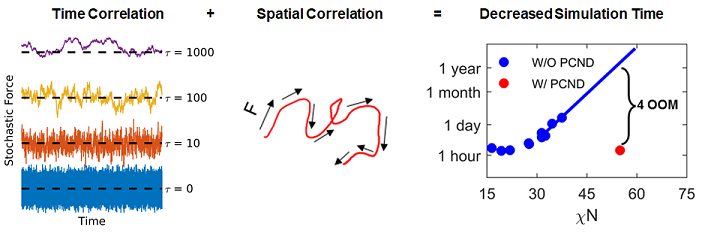
Crosslinked Epoxy Network Optimization and Analysis for Addative Manufacturing
Addative manufacturing is quickly becoming a critical player in the gorwth on future manufactyring industries. New materials with optimized properties are needed for this technique to reach its full potential. We aim to better understand the nature of the crosslinked network epoxies form and how they affect the final properties of the material in an attempt to develop new materials with better combinations of properties such as strength and stiffness, shape memory properties, fire retardancy, excellent fatigue life, and excellent processability.
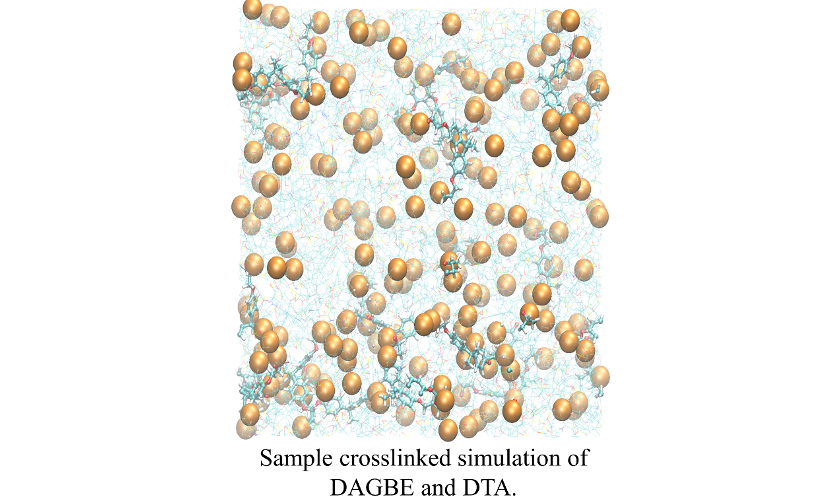
Nanoscale Hydrogel Swelling
Hydrogels are excellent materials for drug delivery schemas because of their ability to controllably uptake and disperse drugs, and their biocompatibility. Nanosized hydrogels are especailly attractive because of their ability to reach parts of the body not otherwise accessible, such as the cytoplasm of cells and their large surface areas which can be used to specialize hydrogels for specific targets. However, the swelling behavior and the diffusion of drugs at this length scale, while known to be different than their macro-scale counterparts, are not well understood.
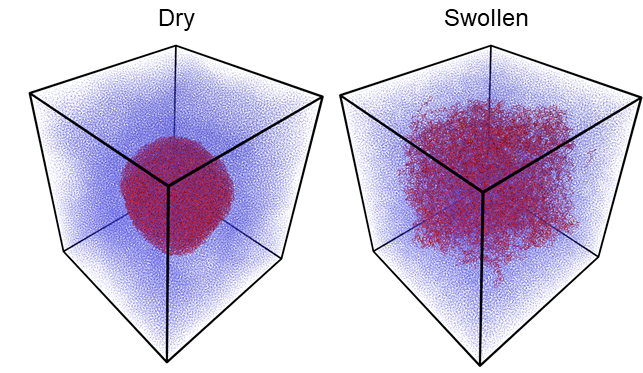
Waste Plastic Enhanced Roads
25 million tons of plastic waste are currently being landfilled each year. By incorporating parts of this waste into the 350 million tons of asphalt mixture that is produced each year, we can both improve the properties of asphalt binder and reduce the shedding of waste plastic into the environment. The main issue is compatibility between the binder and waste plastic. By incorporating various additives, such as block copolymers or crosslinkers, the compatibility can be increase, properties enhanced, and waste reduced.
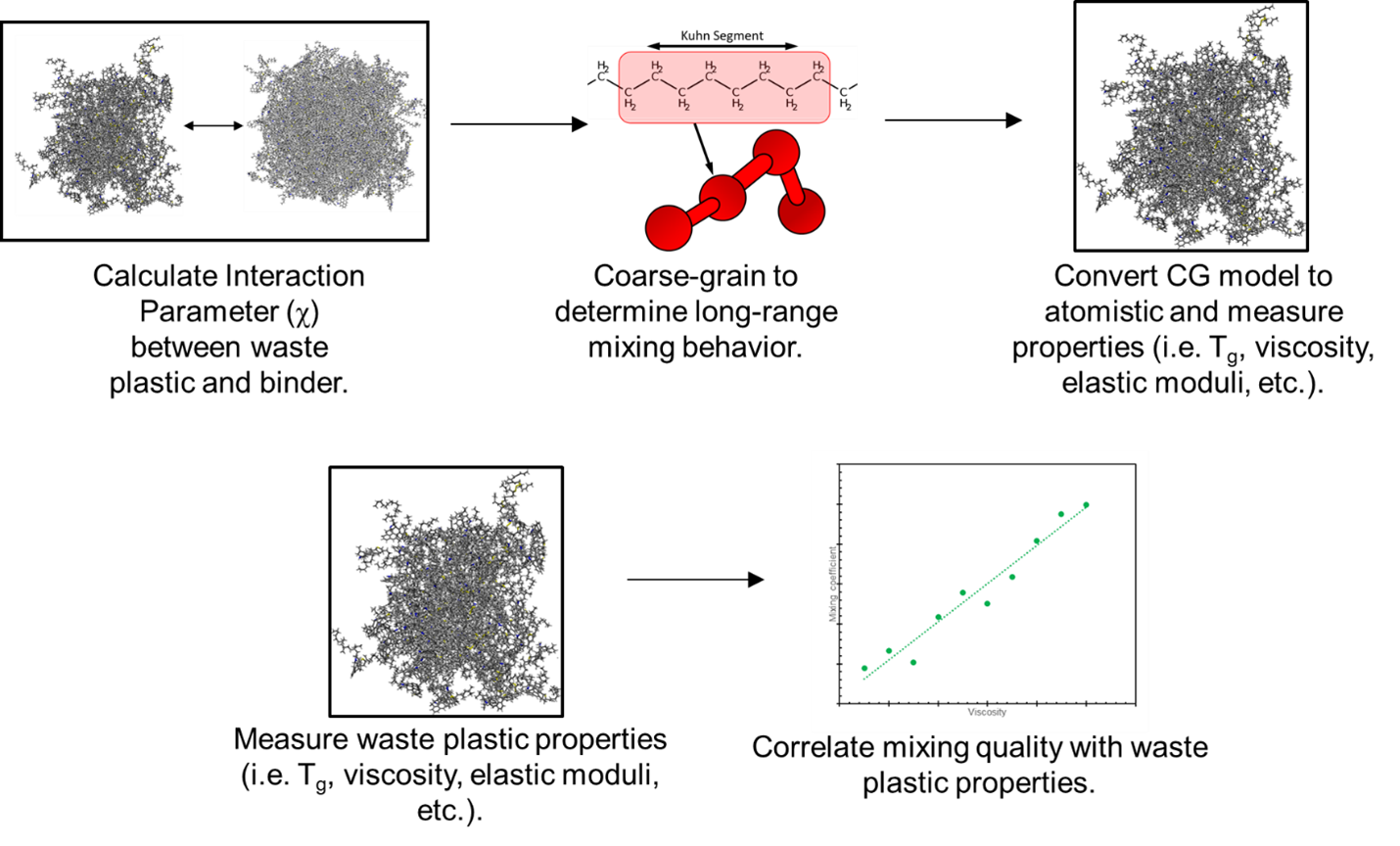
Funding Provided By:
